Climate Change
Policy and Approach
Greenhouse gas emissions have been increasing steadily and it is believed that global warming will affect long-term changes to the climate and in fact is already causing various types of abnormal weather.
Working to reduce greenhouse gas emissions and engaging in other measures against global warming will contribute to easing the impact on the climate. Moreover, providing real estate properties with excellent functionality in terms of addressing these challenges is likely to engender more positive opinion and stronger support from tenants and this will lead to the enhanced competitiveness of the portfolio.
MHR and MIM will aim to reduce CO2 emissions by 50% by FY 2030 when compared with FY 2019 as the baseline year and achieve net-zero emissions by FY 2050.
Through comprehensive and high-quality management of these urban areas, we will continue our efforts to reduce carbon emissions and engage in initiatives to counter global warming and climate change.
External Initiatives
<The Japan Climate Initiative (JCI)>
Mori Building Investment Management Co., Ltd. (MIM), which is MHR's asset management company, joined the Japan Climate Initiative (JCI) in October 2020, supporting its founding declaration. As a member of JCI, MIM aims to realize the decarbonized society envisioned by the Paris Agreement by taking in the experiences of companies, local governments, and others who have implemented climate change initiatives with a pioneering spirit and putting them into practice.
<The Investment Trusts Association, Japan (JITA)>
JITA, of which MIM is a member, formulated the Asset Management Business Declaration 2020, which states that its social mission is to support the realization of a sustainable society with a high quality of life while addressing social issues such as climate change through investment activities. MIM’s views are aligned with those of JITA, and we are striving to tackle climate change by investing in and operating environmentally friendly real estate.
Support for / Response to the TCFD Recommendations
|
 |
MIM announced in May 2020 its support for the recommendations issued in June 2017 by TCFD (The Financial Stability Board’s Task Force on Climate-related Financial Disclosures), which was established by The Financial Stability Board (FSB).
MIM will press ahead with risk management and initiatives for climate change based on the recommendations and carry out information disclosure.
Indicators and Targets
Reduction in Greenhouse Gas Emissions
MHR revised its targets in June 2022 to promote further reduction.
We aim to reduce CO2 emissions of MHR’s and MIM’s offices and properties owned by MHR (total emissions; Scopes 1, 2 and 3) by 50% by FY 2030 when compared with FY 2019 as the baseline year and achieve net-zero emissions by FY 2050.
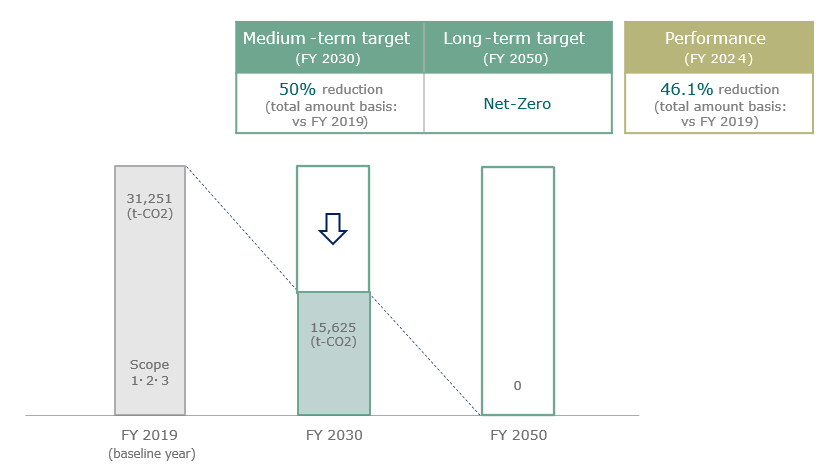
<Carbon Dioxide Emission and Intensity>
Figures, with certain exceptions, are verified and validated by an independent third party. Scope 1 is entirely CO2.
[Boundary] Offices of MHR and MIM and properties owned by MHR (Cover rate: See the table below)
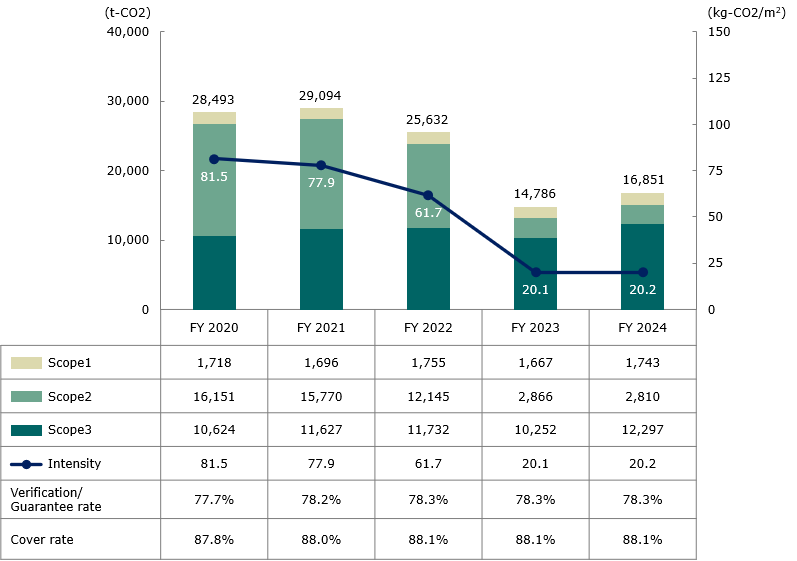
|
- *
- Carbon dioxide emissions are calculated based on the "Manual for Calculating and Reporting Greenhouse Gas
Emissions" by the Ministry of the Environment and the Ministry of Economy,Trade and Industry.
- *
- Intensity is calculated by dividing the carbon dioxide emissions (Scope 1 & 2) by the calculated total floor area.
- *
- For Scope 3, the calculation target was expanded in accordance with the above manual starting in FY 2020.
The figures for FY 2019 and before were changed in accordance with the new standard.
|
<Scope 3 Emissions by Category>
[Boundary] Offices of MHR and MIM and properties owned by MHR
<Energy Usage and Intensity>
[Boundary] Offices of MHR and MIM and properties owned by MHR (Cover rate: See the table below)
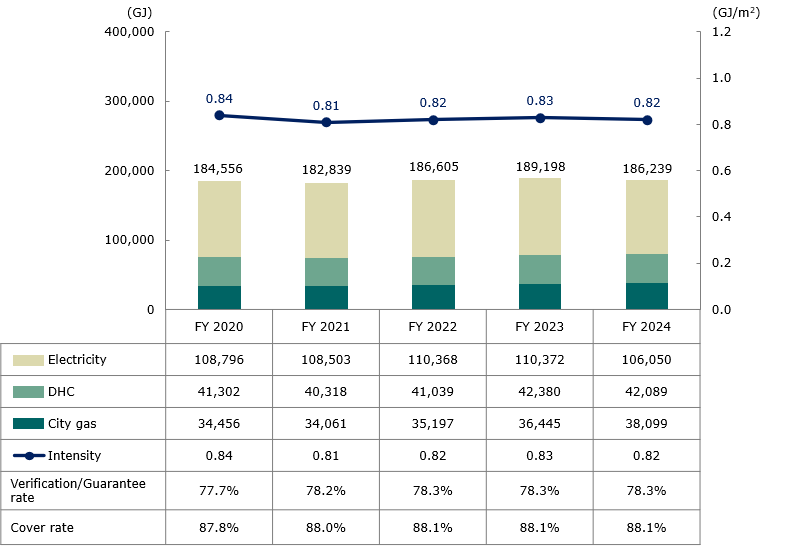
|
- *
- The energy usage of city gas is calculated by multiplying the amount of city gas used by the unit calorific
value specified in the "Manual for Calculating and Reporting Greenhouse Gas Emissions" by the Ministry of the
Environment and the Ministry of Economy,Trade and Industry.
Also, intensity is calculated by dividing the energy usage by the calculated total floor area.
|
Governance
Promotion and Supervisory System
As to initiatives concerning climate change, the Sustainability Committee established at MIM plays a central role in conducting risk management, drawing up policies and programs, monitoring progress and such.
The Sustainability Committee, chaired and supervised by the president of the asset manager and comprised of all general managers and some planning department staff, aims to promote company-wide measures.
In principle, the Board of Directors of MHR and MIM receive reports on risk management and progress status of programs concerning climate change from the Sustainability Committee once a year, and together they supervise all risks by reviewing the effects of risk management processes and giving directions for new actions as necessary.
(Matters reported at the Board of Directors)
MHR’s Board of Directors (at its third meeting in the fiscal period ending January 2025) and MIM’s Board of Directors (at its seventh meeting in FY 2024) reported on the results of ESG evaluations conducted by external organizations and GHG reduction targets, and discussed future measures.
Strategy
Climate-Related Scenario Analysis
<Objectives of Scenario Analysis>
The objectives are to grasp the future risks and opportunities for MHR and MIM presented by climate change-related extreme weather and heightened social demands for climate change countermeasures as well as to verify the effectiveness of current climate change countermeasures and, as needed, utilize them in formulating future strategies.
In accordance with the TCFD’s recommendations, we have analyzed both the 2°C and 4°C scenarios, aiming to ensure resilience in varying weather conditions and social environments and achieve sustainable business growth.
<Analysis Scope and Preconditions>
| 〔Region〕 |
Limited to central Tokyo where MHR’s investment properties are located |
| 〔Scope〕 |
Entire supply chain from fundraising and property acquisition to tenant management |
| 〔Period〕 |
Now to 2050 (short-term: now to 2025, medium-term: 2026-2030, long-term: 2031-2050) |
<Main Scenarios>
| 〔2°C scenario〕 |
RCP2.6 (IPCC AR5)、IEA SDS (IEA WEO2019 and 2020) |
| 〔4°C scenario〕 |
RCP8.5 (IPCC AR5)、IEA STEPS (IEA WEO2019 and 2020) |
| * |
IPCC AR5: Fifth Assessment Report of the United Nations Intergovernmental Panel on Climate Change
IEA: International Energy Agency SDS: Sustainable Development Scenario
STEPS: Stated Policy Scenario WEO: World Energy Outlook
|
<Analysis Procedure>
| 1. |
Discuss the climate-related risks and opportunities mapped out by the TCFD and identify factors likely to significantly impact the business of
MHR and MIM |
| 2. |
Map out and grasp the 2°C and 4°C scenarios based on adopted scenario forecasts for the risks and opportunities identified
in 1 |
| 3. |
Calculate the financial impact of the forecasts in 2 on MHR and MIM (qualitative analysis where lack of information makes quantitative
calculation difficult) |
| 4. |
Consider measures based on the results of 3 |
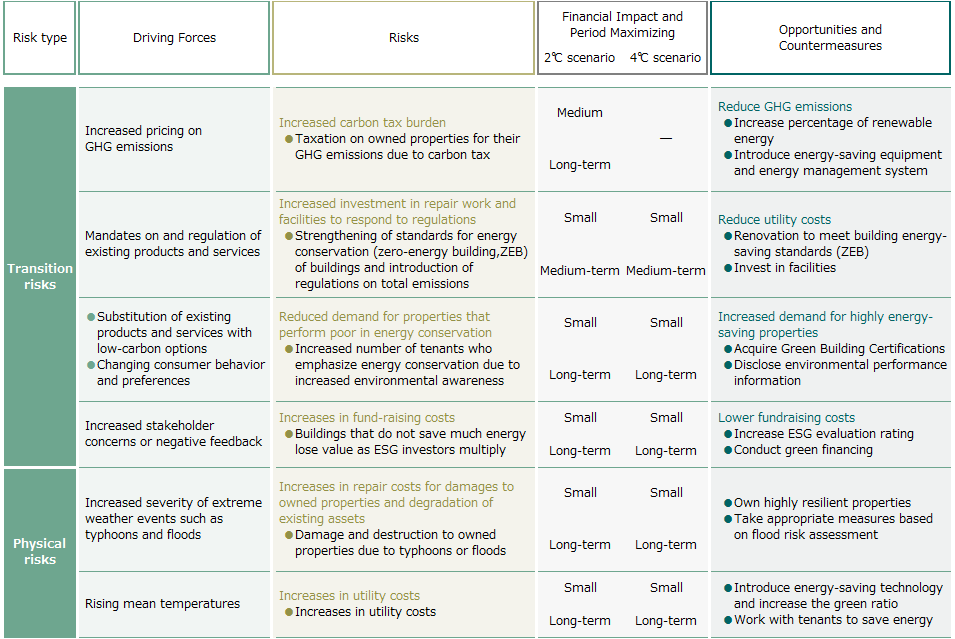
<Analysis Results>
The 2°C scenario presents significant transition risks particularly if Japan introduces a high carbon tax to reduce CO2 emissions, and MHR's property management costs increase due to taxes on properties’ CO2 emissions and renovations to meet stricter energy-saving standards and other environmental regulations. Stricter regulations will also impact tenants’ office selection, reducing demand for properties that save less energy than their peers. Furthermore, if we own a large number of such properties, the cost to raise funds from investors and lenders could also increase.
In preparation for a transition to the low-carbon society of the 2°C scenario and its accompanying risks, MHR has mainly acquired its portfolio of highly energy-saving properties and those with high-level green building certifications to maintain competitiveness, and actively updates facilities on a continuous basis, so we deem these risks to have a limited impact on business.
Meanwhile, the 4°C scenario forecasts increased renovation costs due to intensifying extreme weather and increased utility costs due to higher average temperatures.
Because MHR invests in highly energy-saving, resilient properties located in areas with low flood risk, we deem these risks to have a limited impact on business.
Risk Management
Climate Change Risk Management
MHR has established a project team for climate change-related risks led by the President & CEO of MIM as a management structure independent from company-wide risk management, and the top leadership takes it upon themselves to actively supervise the entire company with a broad, long-term perspective.
After supporting the TCFD’s May 2020 recommendations, we once again identified the risks and opportunities for MHR presented by climate change. That fall, along with grasping the impact of those risks and opportunities on the business of MHR and MIM, we analyzed scenarios to see whether we needed to revise our strategy, and exposed particularly important risks based on likelihood, timing and financial impact assessment.
Based on the results of this analysis, the Sustainability Committee will formulate plans and programs and monitor progress to step up current measures.
Internal Carbon Pricing
We have set an internal carbon price (10,000 yen/t-CO2) that we use as a reference for investment decisions and energy-saving construction and that connects to preventing global warming and climate change.
When considering investing in a new property, we apply our internal carbon price to the property’s CO2 emissions to calculate income and expenditure and use this as a reference for appraisal and investment decisions.
Furthermore, when the amount of CO2 emissions reduced by energy-saving renovations (HVAC replacement, LED conversion, etc.) is clear, we apply our internal carbon price to that amount as a reference to decide whether to undertake these renovations.
Adaptation to Public Policy/Regulations
MHR and MIM support the climate change policies established by Tokyo Metropolitan Government for Tokyo where our offices and the properties owned by MHR are located, and we are working to reduce greenhouse gases based on the Environment Ordinance to Ensure Tokyo Citizens’ Health and Safety.
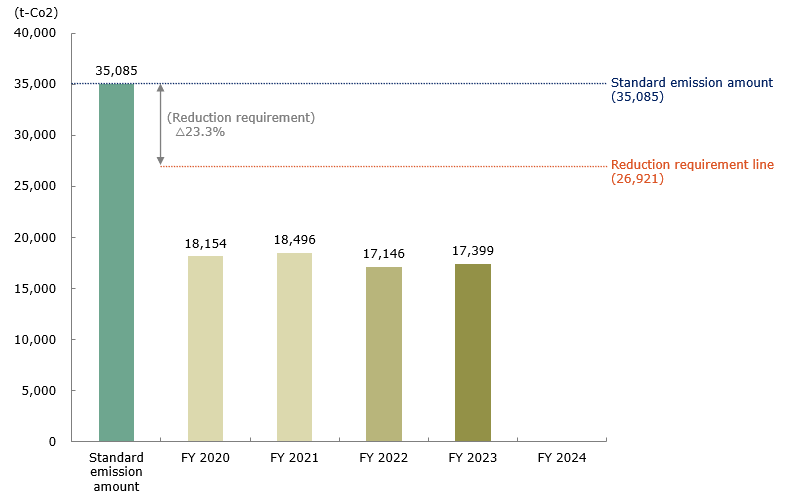
|
- *
- Aggregate figures for offices obliged to reduce emissions under the Tokyo Government’s Cap-and-Trade Program,
which makes it mandatory for large-scale facilities to reduce their greenhouse gas emissions
(this applies to all office properties except Holland Hills Mori Tower).
For some of the owned properties, the figure was calculated by multiplying the total by the proportion for which
MHR holds ownership rights.
|
Promotion of Energy Saving
Introduction of Energy Saving Technologies
<High-efficiency Air-conditioning System LOBAS>
LOBAS (Low-carbon Building and Area Sustainability) is an air conditioning system that optimally combines multiple energy-conserving technologies, including the use of medium-temperature chilled water and low-temperature warm water, and heat collection using heat pumps (turbo chillers).
Based on an electrical system, it is expected to conserve energy by approximately 40% compared to conventional methods.
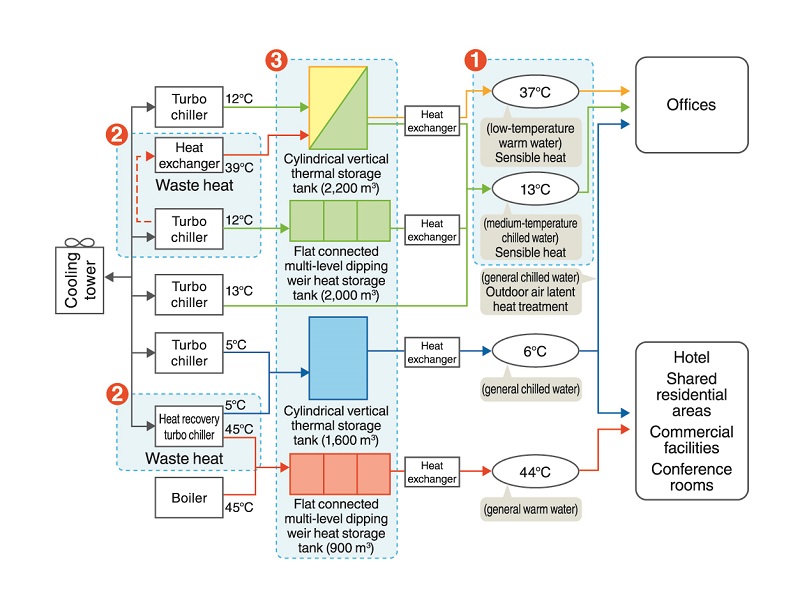
|
| |
1. |
Air-conditioning system using medium-temperature chilled and low-temperature warm water
Air-conditioning method separating sensible heat and latent heat treatment using 13°C medium-temperature
chilled water and 37°C low-temperature warm water.
|
|
2. |
Heat recovery heat source system
Use of waste heat from the turbo refrigerator cooling water, and adoption of heat recovery turbo chillers.
|
|
3. |
Large-scale thermal storage tank system
Combination of a large-depth (approximately 30m) cylindrical vertical thermal storage tank and a flat connected
multi-level dipping weir heat storage tank (6,700m³ in total)
|
<Building Energy Management System>
Building Energy Management System (BEMS) is a system that enables energy-conserving operations by assessing energy usage conditions and indoor environments in buildings.
Energy usage conditions are checked in real time through centralized management. Accumulating and analyzing data also enables the elimination of excess and wasteful use of energy.
At Toranomon Hills Mori Tower, MB has implemented Smart-BEMS (S-BEMS) which, in addition to existing functions, has functions for clarifying criteria for determining normal and abnormal measured values, further increasing the efficiency of data analysis.
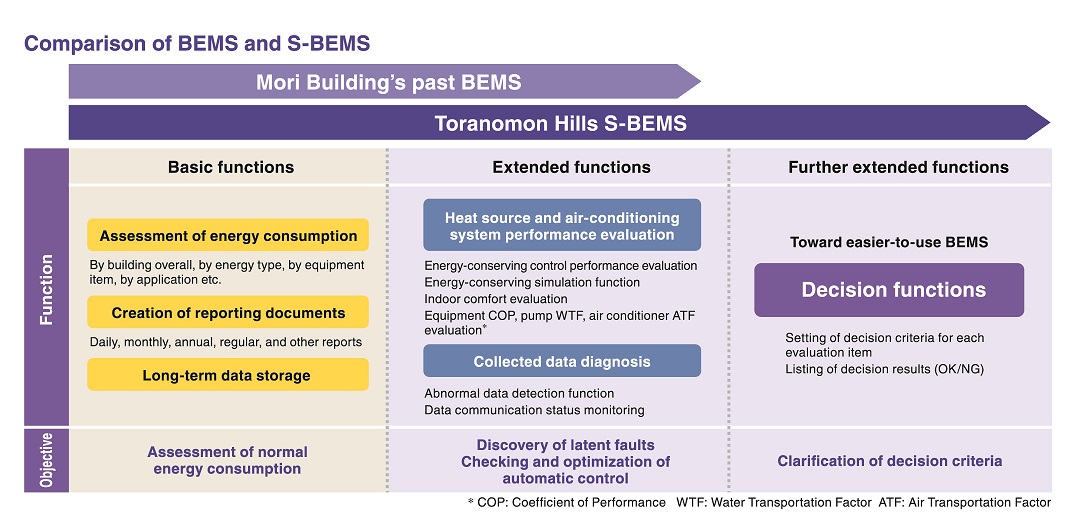
<Switching Grid Lighting to LED>
At buildings adopting grid ceiling lighting fixtures, MHR has a method for leaving the lighting fixtures and changing only the light sources to LED, for the purpose of improving energy conservation performance, prolonging equipment life, and conserving resources.
This removes the need for ancillary work (restoration work and removal of sprinkler heads, air outlets, emergency lighting, sensors etc.) when changing light sources, greatly simplifying construction and conserving resources.
MHR is also undertaking the switch to LEDs at Roppongi Hills Mori Tower, ARK Mori Building, and other buildings.
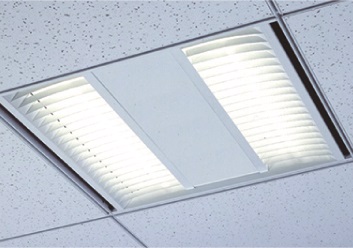 |
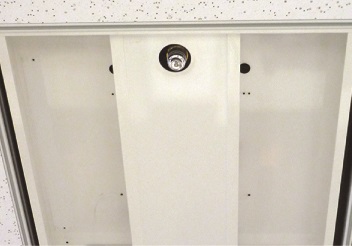
|
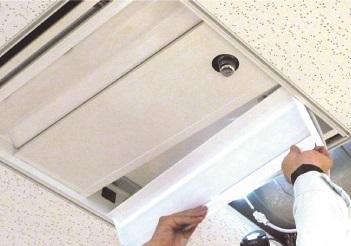
|
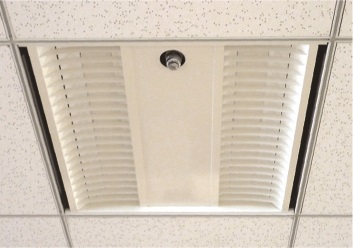
|
1. Existing fixtures
(fluorescent lights)
|
2. Lamps, ballasts etc.
|
3. Installation of
LED units
|
4. Attach louver,
switch to LED
|
Building Management System to Measure Energy Efficiency
MHR has introduced a system that measures and manages energy efficiency by measuring and monitoring energy usage at all office properties it owns.
Green Lease
Tenant’s energy consumption through the usage of air conditioning, lighting, etc. has a considerable impact on an office building’s environmental performance.
Close collaboration with our tenants is a key factor in achieving optimal energy efficiency.
MHR holds an environmental countermeasure council once or twice a year depending on the office building.
The council generates a report on the efforts to improve sustainability and raises awareness for power saving methods.
As a reference for tenants to draw specific measures for conservation of energy, MHR has provided, at all office properties it owns, “WEB cloud services” as a tool to make tenants’ energy usage visible (properties with the service as a percentage of all owned properties: 98% based on acquisition price).
In addition to these efforts, MHR is further deepening relationships with tenants by introducing “green leases” which secure commitments from both parties.
MHR is gradually expanding this approach since the introduction of the first green lease in ARK Hills South Tower.
Collaboration and Commercial Agreement with Suppliers
In the real estate leasing business, the PM company is a stakeholder as well as the most important supplier to MIM, and MIM believes it is essential to share sustainability values with the PM company to promote sustainable business practices.
For the purpose of operating and managing the assets we own, MHR has selected a PM company that agrees with our sustainability-related policies and also possesses the systems and expertise required to implement them in practice.
In order to share our values with the PM company, MIM reviews the systems, policies and other activities related to sustainability twice a year by written notice.
In addition, MIM evaluates the PM company with an external evaluation agency once a year to share and raise awareness through feedback interviews and compliance exchange meetings with the PM company.
In addition to these efforts, with respect to the environmental performance of assets under management, various measure such as additional environmental countermeasure construction work are examined and monitored based on reports from the PM company.
External relative environmental performance evaluation is also carried out through the GRESB real estate evaluation and other review processes.
MIM outsources global warming countermeasures for office properties to the PM company for a fee, and makes full use of the environment-related know-how cultivated by the PM company.
MIM works with the PM company to maintain and improve the environmental performance of MHR’s properties.
Transition of Green Power Generation
As part of measures against global warming, solar power generation systems have been installed at Roppongi Hills and Toranomon Hills for effective use of unused and natural energy.
The power generated is used in lighting, etc. within the facilities.
Note that the disclosed figures for FY 2022 and FY 2023 are lower than the actual level due to a system failure that caused some data to be unable to be obtained.
